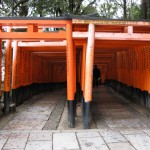
Torii, torii, torii...
The reference to the Shitennoji torii in Osaka is interesting. Unfortunately I haven’t seen it myself, but it’s worth noting that its founder, Prince Shotoku, while being a fervid Buddhist was also a syncretist. Though diligently furthering Buddhism, in 607 he issued a proclamation that respect should also be given to the kami. It’s not clear when torii first appeared in Japan, but I guess Shitennoji may be the oldest. Interestingly one theory holds that they arrived at the same time as Buddhism, sometime in the sixth century. My own feeling, having travelled through Korea, is that like much else they derive from the peninsula. Ancient Korean villages had shamanic bird perches called sotdae, and if you string a sacred rope between the two poles, you have the early form of torii. It’s surely no coincidence that the Japanese translates as bird-perch (tori–i).
The Kansai Scene article also discusses a three-legged torii in Kyoto, which I have visited. Personally I take the reference to the Trinity with a pinch of salt. It rests on the theory that Nestorian Christianity reached Japan through the Hata clan, though the evidence is scant and speculative. Since I’ve seen other examples of three-legged torii – there’s one in Tsushima, for example, at Watatsumi Shrine – it’s not unique in some holy trinity kind of way. Three is a magic number for all kinds of reasons (see my piece on the triple tomoe for instance), so the three-legged torii is likely to have other significance. There’s a picture of one here: http://www.flickr.com/photos/andorus/1257318349/
For anyone wanting to explore more, I’d advise turning to the very informative Wikipedia page. It’s amazing how much the site has been improving in recent years, and though it’s not long since I last looked at the torii page, the updates have transformed it. Kudos to the volunteers for all their work!
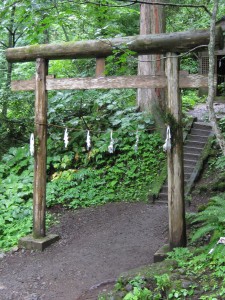
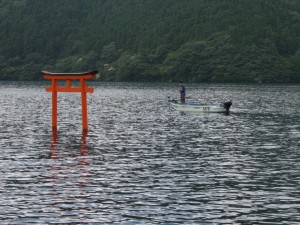
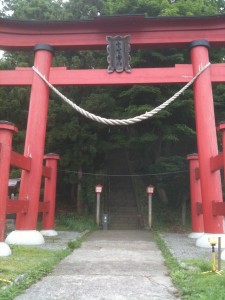
Gateways to another world

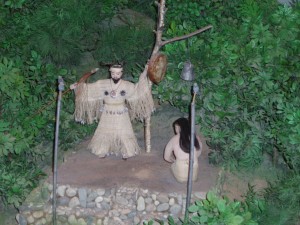
Leave a Reply